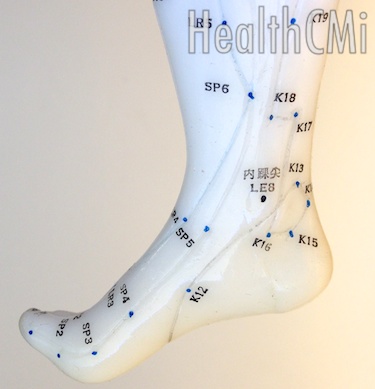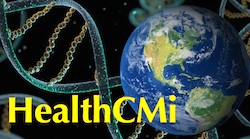Researchers have discovered that acupuncture causes a special biochemical reaction that reduces inflammation and muscle pain. The study, published in Molecular Neurobiology, investigated the effects of needling one acupuncture point on the leg. The research team measured a remarkable effect.  Manual acupuncture stimulation downregulated M1 macrophages (pro-inflammatory cells) and upregulated M2 macrophages (anti-inflammatory cells). As a result, acupuncture reduced pain and swelling.
Manual acupuncture stimulation downregulated M1 macrophages (pro-inflammatory cells) and upregulated M2 macrophages (anti-inflammatory cells). As a result, acupuncture reduced pain and swelling.
This neurobiological acupuncture continuing education study solves a great mystery, how does acupuncture work? The secret is in the biochemistry. M2 macrophages are an important source of IL-10 (interleukin-10), an anti-inflammatory cytokine that plays an important role in immune responses. Cytokines are proteins released by cells that regulate reactions between cells. Manual acupuncture successfully downregulates M1 macrophages and upregulates M2 macrophages thereby promoting the release of greater IL-10 concentrations. As a result of IL-10 release, pain and inflammation significantly reduce.
This study measured responses in muscle tissues and confirmed that M1 to M2 macrophage phenotype switching is triggered by acupuncture stimulation. Acupuncture literally flips a switch wherein initial inflammatory responses are reduced and the secondary healing responses are promoted. M1 macrophage downregulation and M2 macrophage upregulation triggered by acupuncture was positively associated with reductions in muscle pain and inflammation.
The researchers tested the biochemical process by adding an IL-10 blocking agent in the laboratory experiment. When IL-10 was chemically blocked, acupuncture did not reduce pain and swelling. However, when no blocking agent was applied, acupuncture successfully reduced both pain and swelling. The M2 macrophage upregulation by manual acupuncture successfully created a greater source of IL-10. The researchers note, “These findings provide new evidence that MA (manual acupuncture) produces a phenotypic switch in macrophages and increases IL-10 concentrations in muscle to reduce pain and inflammation.”
Macrophages are required by the body to resolve muscle injury. During injury, M1 macrophages are produced and release inflammatory biochemicals including pro-inflammatory cytokines. M2 macrophages have anti-inflammatory properties and promote the release of interleukin-10. An injury process features an initial inflammatory stage wherein M1 pro-inflammatory macrophages are upregulated. A secondary recovery phase wherein M2 anti-inflammatory macrophages are upregulated helps to promote healing and repair. Manual acupuncture successfully triggered the phenotype switch wherein the M1 macrophages were downregulated and M1 macrophages were upregulated thereby allowing increased IL-10, reductions in pain and decreased swelling.
Acupuncture continuing education in the form of basic research and clinical medicine has helped to measure positive patient outcomes and the biochemical mechanisms by which acupuncture exerts its beneficial medical effects. This latest study helps to unlock one of the greatest secrets of acupuncture, how does it stop pain? Now, scientists can quantifiably measure specific biochemical processes triggered by acupuncture and the resultant positive health outcomes.
Getting To The Point
The acupuncture point tested in this investigation was SP6 (Sanyinjiao, Three Yin Intersection). SP6 is located 3 cun directly above the tip of the medial malleolus, on the posterior border of the medial aspect of the tibia. According to Traditional Chinese Medicine (TCM) theory, SP6 strengthens the spleen, transforms dampness, spreads liver qi and benefits the kidneys. SP6 indicated for the treatment of abdominal pain & distention, diarrhea, dysmenorrhea, irregular menstruation, uterine bleeding, leukorrhea, prolapse of the uterus, sterility, difficult or delayed labor, nocturnal emissions, enuresis, dysuria, lower limb atrophy or motor impairment, lower limb hemiplegia, vertigo due to blood deficiency and insomnia. SP6 is the meeting point of the three lower yin meridians: spleen, liver and kidney. 
About HealthCMi: The Healthcare Medicine Institute (HealthCMi) publishes news and research on acupuncture, herbal medicine and traditional medicine. HealthCMi provides acupuncture CEU and NCCAOM PDA online courses to licensed acupuncturists for acupuncture continuing education credit. To submit an article for publication consideration, visit www.healthcmi.com and click on the contact us link.
References:
da Silva, Morgana D., Franciane Bobinski, Karina L. Sato, Sandra J. Kolker, Kathleen A. Sluka, and Adair RS Santos. "IL-10 Cytokine Released from M2 Macrophages Is Crucial for Analgesic and Anti-inflammatory Effects of Acupuncture in a Model of Inflammatory Muscle Pain." Molecular Neurobiology (2014): 1-13.
Rafael Torres-Rosas, Ghassan Yehia, Geber Peña, Priya Mishra, Maria del Rocio Thompson-Bonilla, Mario Adán Moreno-Eutimio, Lourdes Andrea Arriaga-Pizano, Armando Isibasi, Luis Ulloa. Dopamine mediates vagal modulation of the immune system by electroacupuncture. Nature Medicine, 2014; DOI: 10.1038/nm.3479.
Wang, Ying, Rebekka Gehringer, Shaaban A. Mousa, Dagmar Hackel, Alexander Brack, and Heike L. Rittner. "CXCL10 Controls Inflammatory Pain via Opioid Peptide-Containing Macrophages in Electroacupuncture." PloS one 9, no. 4 (2014): e94696.


